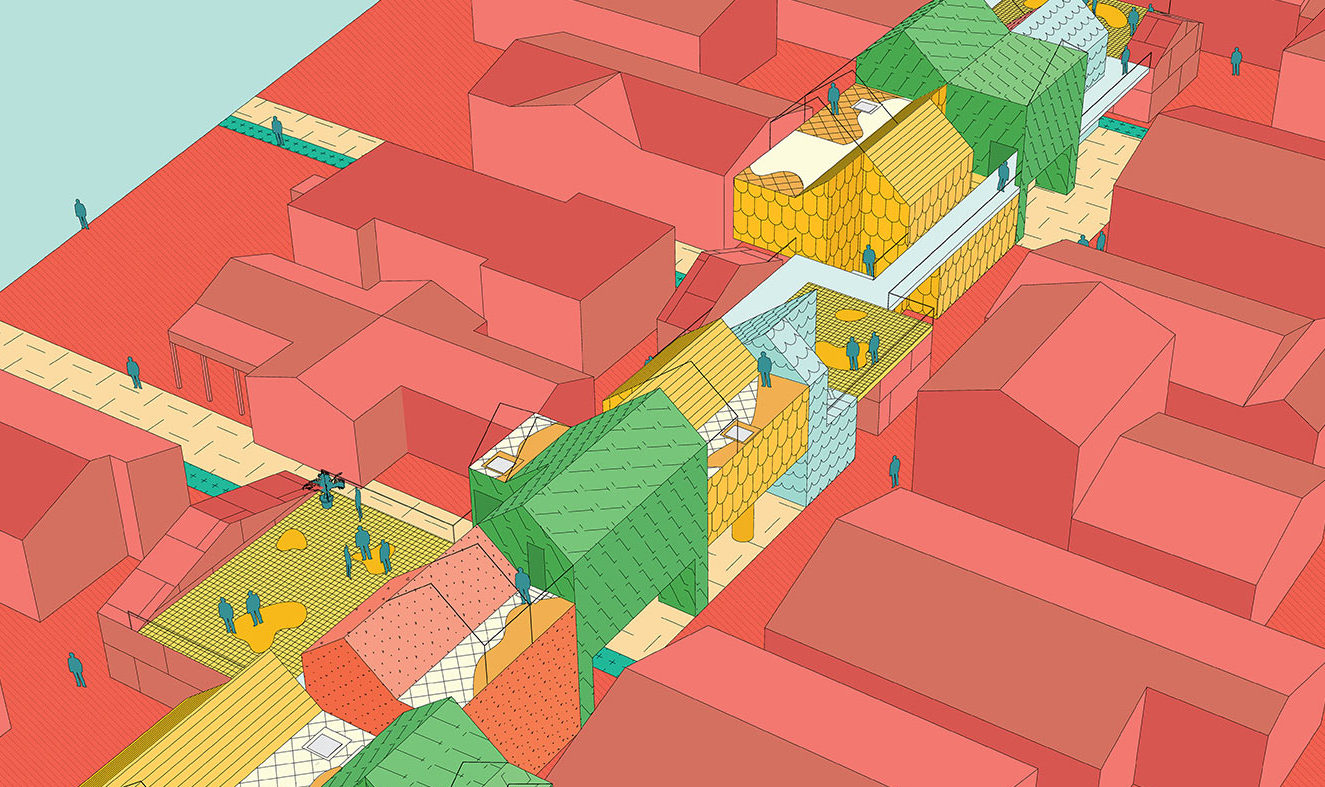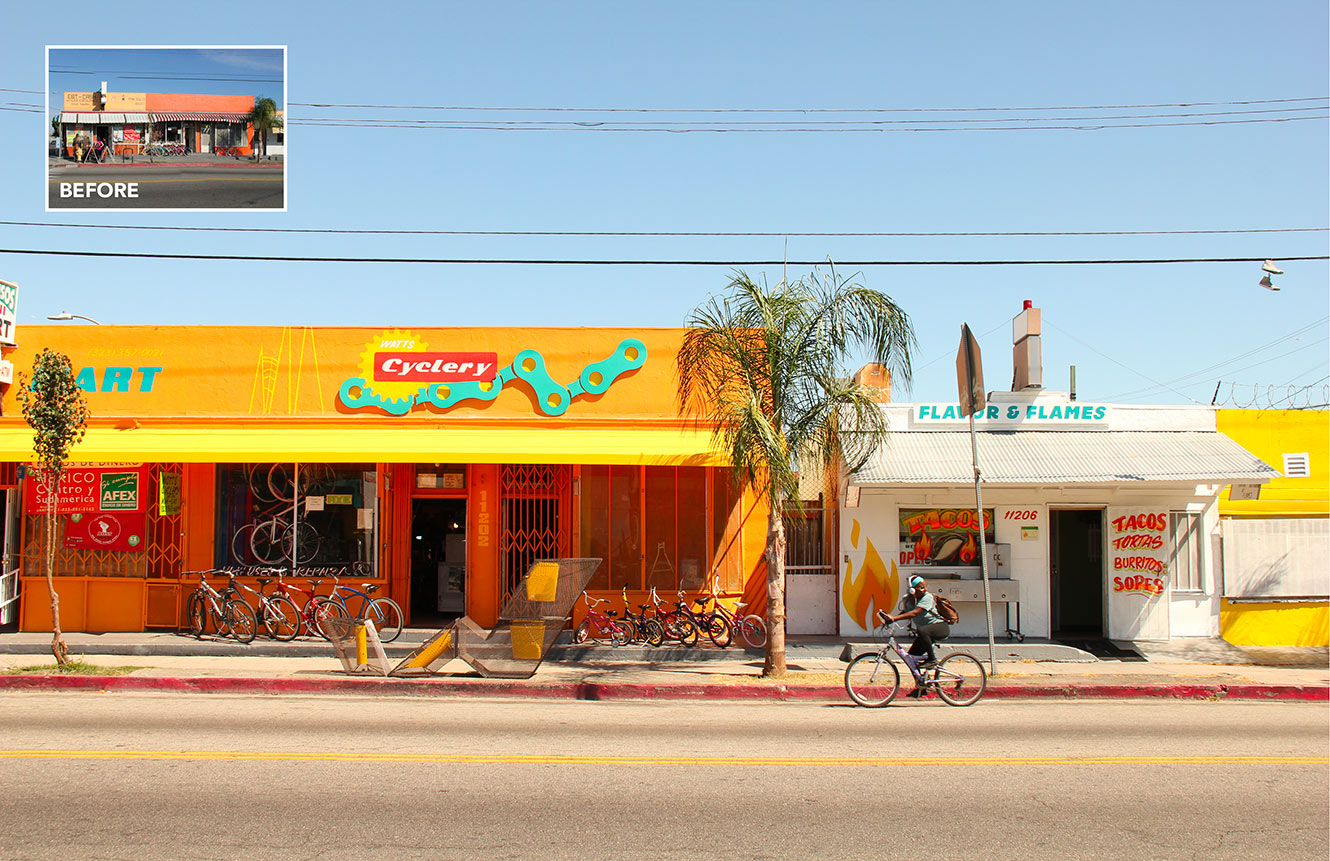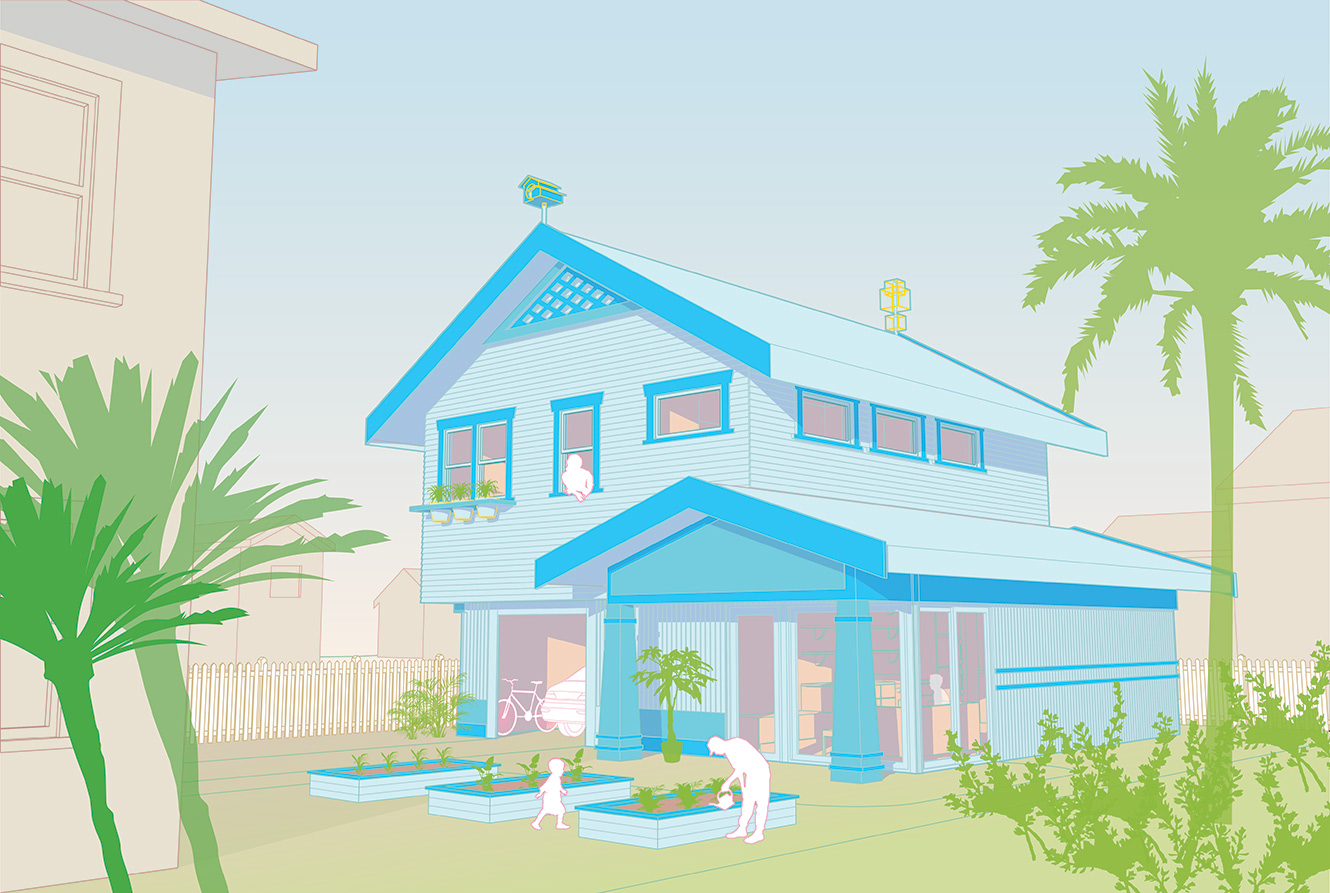Design as civic duty
Elizabeth Timme, co-director of LA-Más, believes that architecture needs to rediscover its political imperative.
An interview with LA-Más, one of eight firms recognized in the 2018 Emerging Voices competition.
Can a nonprofit that offers technical assistance to small businesses and rewrites zoning code be called an architecture firm? For Elizabeth Timme, efforts like these are in fact central to the discipline, which she believes has lost its political imperative.
Timme co-directs LA-Más with fellow Los Angeles native Helen Leung, a public policy specialist. She spoke with Paul Makovsky, vice president of design at Metropolis, about the firm’s origins and its role in the design community.
*
How did you and Helen start working together? Did you work on similar projects before founding LA-Más?
I did four years of hospital construction administration in LA between grad and undergrad. Then I worked with MASS Design Group, mostly in Liberia and Rwanda. I was working hand-in-hand with healthcare administrators in both of those contexts, and I saw the power of architecture and policy to affect cities at a really large scale.
I also taught a course at the Harvard School of Public Health around architectural strategies that affect public health. So it was very clear to me that architecture had all this untapped power once you collaborated with another discipline.
Helen worked with HUD, and she was a White House intern also. In DC she was looking looking at larger scales of affordable housing: community growth models and community development corporations.
Before that, she had worked in Eric Garcetti’s office when he was on the LA City Council. He’s now the mayor. She learned a lot during that period doing small projects like community gardens, trying to make neighborhoods better, but she realized that they were not enough and wanted to work more on a system level.
She felt, like I did, that if she came back to Los Angeles, she could marry those two perspectives and create something else.
It was clear that there were a lot of opportunities for us in the city. I could see the beginnings of the homeless crisis, the beginnings of gentrification, the neighborhoods that I grew up in starting to become mini-Brooklyns.
So you started the firm together.
I’m technically the founder, and my godmother, Mia Lehrer, is the cofounder. She’s a landscape urbanist, and she incubated us. She came up with the name.
She’s incredibly passionate about the first phase of design being community engagement, and no one ever pays her to do that. But it’s so essential to how she’s actually become the architect of the city of LA. You look at the LA River, Dodger Stadium, the Natural History Museum . . . she has consistently been the visionary behind all of our future public space.
Helen and I met at a party and were like, “Oh, this is how it could look to work together.” She had all these connections to politicians, and I knew how to build affordably and quickly.
Having a partner who’s engaged in policy is a really great opportunity for a designer. We walk into these meetings with the City and they want to talk about solar panels on trash cans, and I want to cease to exist. But she’s able to hold space for that, then talk about what the community needs.
She can speak the language.
Yeah. She speaks the City’s language, and she also speaks the community’s language. So we become facilitators of that conversation.
It’s much more effective than me just being the critical or sarcastic architect. There are people of a certain age and strata in the profession in LA that write very critical articles about the City, but they don’t actually talk to anyone in the City. That’s not changing anything.
Whereas we have the City along for the ride. And they’re not saying, “Oh, that’s such a nice idea, that’s so sweet.” They’re saying, “This is really cool, and you’re going to be making it so that we’re investing in the community.” We become proxies for that investment.

LA-Más sees backyard accessory dwelling units (ADUs), also known as granny flats, as one solution for the city’s affordable housing crisis. Researchers believe that around 50,000 such dwellings in LA are currently unpermitted. The firm’s Backyard Basics project investigated opportunities for individual homeowners to build ADUs on their property, enabling them to collect rent payments while creating affordable housing.
What was your first project?
Basically, Councilman Joe Buscaino said, “We have this report—people want to feel safer and for their streets to be cleaner.” We went and looked at the businesses on this corridor [referenced in the report], which is in Watts, and said, “They’re struggling, they need something to identify that they’re unique.”
Trash cans and trees are seen as empty promises in LA, because no one picks up the trash and no one takes care of the trees, so they die. So we said, “Instead of spending all this money on those things, why don’t we do storefront remodels?”
And around that time, the Community Redevelopment Agency closed in California—Governor Jerry Brown balanced the budget by doing that. So storefront remodels, parks, libraries, all these public space investments stopped happening. There was this big gap in [State-funded] services, and we [helped the City] start to slowly fill it.
But the Community Redevelopment Agency had been paying $150,000 per storefront remodel, and we had $7,000 for all our materials for nine businesses. So we just did plywood signage. The permit was more expensive than the plywood.
We were able to create signage that reflected the owners’ passions. Like, one woman was super into the sandwiches she was making, but her original signage didn’t reflect that. The owner of the party supply store was hand-making piñatas and would do it for hours.
And these people were surviving under extreme conditions. We saw gunshots—people were robbing them two or three times a week in the middle of the day. They’re surviving because they’re committed to serving the community.
But the awful thing about this project was that we couldn’t do anything more. We had all this knowledge from the design process—which is a very intimate one—about brand, and overhead, legal issues. I knew about all these businesses’ inventory, their overhead, the licenses that they needed. But there was no room in the project to do anything with it.
We came out of that project saying, “We’re never going to do anything like that ever again.” If we were going to help any small business owner, we were going to offer technical assistance. Paint doesn’t solve the problem.
So for another project on Avalon Boulevard, we got funding to provide technical assistance. We hired staff to work with 12 businesses to give them licenses, business plans, inventory plans, marketing.

Carried out in conjunction with LA Council District 15, the Avalon Small Business Support Program provided storefront redesigns in addition to services like online marketing support, business planning, and commercial lease referrals. Credit: LA-Más
But that’s why architects look at our work and say we’re not doing architecture—because 90% of the project is invisible, and it doesn’t have a physicality to it.
Do you think the architectural profession has failed us?
For sure.
Well, the education model is really fantastic, in that it teaches you how to dimensionally prioritize information. That’s a really incredible gift.
It sounds like there’s a “but”.
I don’t think the practice reflects the education, and I don’t think the education prioritizes what’s great about learning architecture anymore. We’re having very mannered conversations, making up words to describe things that are unsubstantial.
There’s a need for architects in all things civic, but no one at an architecture school would know what a council district is. No one would know what a community-based organization is.
That’s why I stopped teaching, actually. So many of my friends [at school] just didn’t get it. They were so confused that I was helping rewrite the zoning code for the city. They were like, “What do you do? What are you doing?” And I’m like, “I’m an architect. What do you mean, what am I doing?”
My father was an architect, and when I was growing up I remember him talking to people outside of architecture all the time, and that being very normal. It was a very political thing to be an architect, and I don’t see it as that anymore.
It seems like we’re prioritizing it being an art. Which is fine, but then why are we getting licensed? If it’s not a trade anymore, let’s be real about that. Then people like me are just something else.
If architecture is going to be a practice, that’s cool; if it’s going to be an art, that’s cool—but toeing the line isn’t productive anymore.
Interview edited and condensed.
Explore
Interview: MASS Design Group
An interview with Michael Murphy of MASS Design Group.
Mexico’s Traditional Housing Is Disappearing—and with It, a Way of Life
Mariana Ordóñez Grajales and Onnis Luque are fighting to preserve their country's vernacular architecture.
Connective spaces and social capital in Medellín
Jeff Geisinger investigates the built environment's impact on social capital in Colombia's second-largest city.




